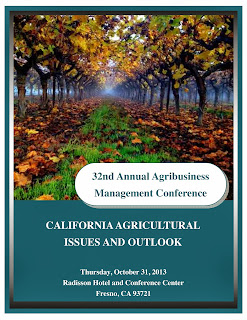GOVERNMENT SHUTDOWN TO AFFECT AGRICULTURE
Shutdown on Agriculture
- Up to 1 million U.S. federal workers may face furloughs without pay beginning October 1 (tomorrow).
- Most federal agency workers will be furloughed.
- Federal workers could face penalties if they tried to do any work during the furlough.
- The FDA said it would continue “limited activities” only related to drug approval applications.
- Meat inspectors for the U.S. Department of Agriculture, considered necessary to national safety, would stay on job.
- The United Fresh Produce Association’s Washington Public Policy Conference, in progress in Washington, DC, has had to relocate or cancel events. Participants’ visits to Congressional offices have been cancelled or are pending cancellation.
- An Oct. 2 seminar at the University of California, Davis by research entomologist Jay Evans of USDA’s Agricultural Research Service (USDA-ARS) Beltsville Bee Research Laboratory has been cancelled.
- Some Department of the Interior-Bureau of Land Management services and programs that will cease are:
- Endangered Species Act and cultural clearances
- Range management restoration
- Work on resource management plans, including those driven by court deadlines
- Monitoring of grazing allotments
- The U.S. Agriculture Department will cease its statistical reports leaving traders and food producers in the dark about most activities in the world’s largest farm exporter. (Reuters)
- USDA may be forced to delay the release of its monthly crop estimates, due on October 11, which often cause swings worth billions of dollars in the price of corn, soybeans, wheat and cotton.(Reuters)
- The department’s public face, the usda.gov website, has already been shut down:
- USDA’s NASS (National Agricultural Statistics Service) statistics and other agricultural economic and statistical reports and projections will be discontinued.
- The Economic Research Service, which provides analysis and forecasts, would be shuttered and its public Website would be taken offline, said USDA. Agricultural research stations also would close, and reports from USDA’s Foreign Agriculture Service attaches around the world would be suspended.
- The Bureau of Reclamation’s contingency plans are to keep minimal services and programs operational for emergency purposes and/or excepted activity with non-appropriated or non-lapsing funding, such as:
- Dam Safety Program
- Reservoir Operations/Water Delivery
- Emergency Management
- Operations & Maintenance
- Water Rights
- Water Treatment
- Bureau of Reclamation’s routine reporting, inspections, and planning will cease.
- EPA will be nearly totally shutdown, retaining a few essential employees.












